This is Part 3 of our exclusive interview with Jenny Gore Dwyer. To catch up on the series, here’s a link to Part 1 & Part 2.
When was Pat diagnosed with ALS, and how did that affect you, the family, and the business?
Pat was diagnosed with ALS in June of 2005.
For those who don’t know about ALS, it’s a horrible disease that slowly or quickly paralyzes you. For some reason, the nerves stop telling your muscle to work, and eventually, you become paralyzed. That includes your speaking muscles and your diaphragm, too, so you aren’t able to speak or breathe.
The horrible thing about ALS, I mean, other than critical breathing, is that your brain stays fully functional. So, as your body stops working, your brain keeps going. You can’t speak, but you still have intelligent thoughts running through your head. Technology is amazing these days, so there are ways to communicate if you can’t speak or breathe. So, if someone with ALS chooses, they can still be vibrant in this world.
I remember the day Pat was diagnosed with ALS. I can see the scene clearly in my head. We were in an exam room. The ALS specialist was at the head of the room. The walls were this weird peachy pink color. Pat sat next to the doctor, I was next to Pat, and our sister in law, Charisse, was sitting across from us, taking notes. Pat had had several tests done, and the conclusion was he had ALS, also known as Lou Gehrig’s disease.
Pat was 44 years old. Most people diagnosed with ALS have a life span of 2-5 years. To say we were shocked was putting it mildly. We had never known anyone with ALS, and there was no history of it in his family. His ALS came marching out of the blue, without a care in the world for Pat, and trampled our lives.
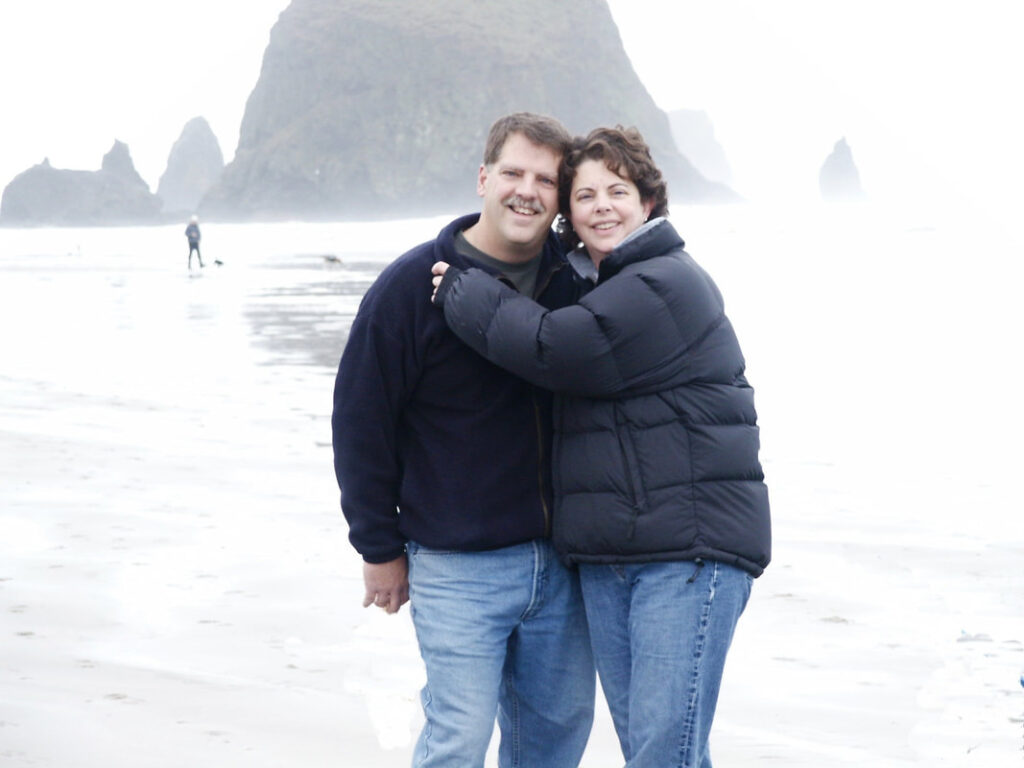
We sat there, listening to the doctor say, “There’s not much you can do. There are no treatments for it. Go home, get your affairs in order, and try to enjoy your life.”
The room was silent for a bit. Then I said, “Um, no, I think you must be wrong, you don’t understand, I was diagnosed with a weird type of cancer. Well, two types of weird cancer. Our family has already been through the weird disease thing. You have to be wrong.” Again the room was silent for a bit, and the doctor replied, “All indications point to your husband having ALS.” Silence again. Then the doctor added, “It seems to me he may have a slow progression of ALS so that we can monitor him in our ALS clinic, and he may have more than 2-5 years.” I then replied, “Well, ALS hasn’t met our family, and it’s going to meet its match with us.”
That was the diagnosis day. It was stunning. It was devastating, and Pat and I couldn’t even talk to each other on the ride home from the clinic. I was afraid to open my mouth. I felt so sick to my stomach; I was afraid vomit would come out instead of words.
It took Pat and me about three months to process the news of his diagnosis, and during that time, there wasn’t much discussion, just tears, and disbelief. At some point, we knew we would have to tell our kids, Brenna and Sean. I mean, how do you tell your 13 and 15-year old that their father has a disease that is 100% fatal? At least with my cancers, I had a fighting chance with chemo. With ALS, there was not even a chance of any real medications to slow the disease down.
As we processed the news, the business continued to run. In the beginning, it was only Pat’s hands that were affected. They were weak, but he could still use them. His grip wasn’t very strong, but he could still write, type, hold a coffee mug and a cookie and work away successfully.
There were days when his hands just wouldn’t work, but those were the days that I brushed his teeth for him, or the kids held his coffee cup for him, and I would type his emails for him. When I did do his typing for him, he would constantly ask me, “Can you take those exclamation points out? Guys, I don’t type emails like that.”
If it was crabbing season, Pat did a daily check-in with the boat. We had a Trac/Tag phone at our house that we could call the boats. Again, if his hands were too weak to press the key in on the mic, I would do it, or one of the kids would.
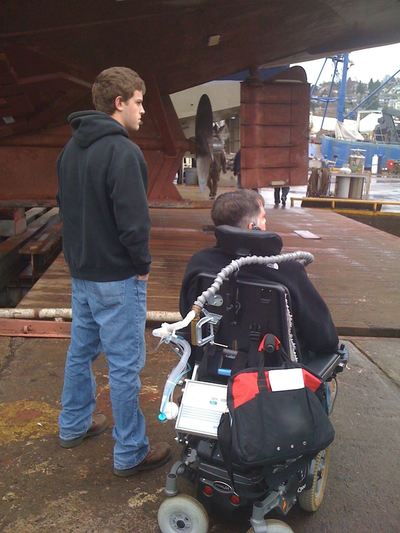
Pat was still able to drive for a bit, so he continued with his morning trek to the boats for most days. He would check on the boat, chat with fellow boat owners, vendors, and then come home. It turns out he did have a slower progression of ALS. While always startling, his progression to the next stage of ALS was slower than most disease progressions.
For the first couple of years, life with ALS seemed doable. I learned to take out the most of the exclamation points in the emails, and Pat learned that sometimes one could actually exclaim a point. The kids learned that sometimes their Dad would need help getting a door opened or putting on his jacket.
Oh, and I almost forgot: in the beginning, just six months after Pat was diagnosed with ALS, a disease that’s 100% fatal, he bought another boat!
For years we had owned our business and operated with only one boat.
But. Pat had always wanted two boats. He decided there was no better time than then to purchase another boat, six months after being diagnosed with ALS. In my mind, it was crazy, but it was typical Pat…the bigger the idea, the bigger the challenge, and he was always up for a challenge.
We had no idea how ALS would affect our lives, our family, or our business. We had no idea how much physical work Pat would be able to do on the boat. We had no idea how long he would live to run the business. We just had no idea.
I was secretly hoping he’d take my suggestion and we sell everything, find a sandy beach, and just enjoy the days we had left with him.
But. Pat had always been a project guy. Projects kept him involved and engaged. If he had a huge project to keep him super busy, maybe he wouldn’t notice ALS sneaking into other parts of his body.
If he had a project to keep him busy, maybe he could grow the business into what he wanted it to be in the time he had left. I think, in his mind, he was building a safety/security net for us. He may not be around to see the success of what he created, but he could provide the bones to help us succeed.
Plus, I know the main part of Pat’s drive to get another boat was to be able to name it after his baby girl, Brenna Adele. He wanted to see that.
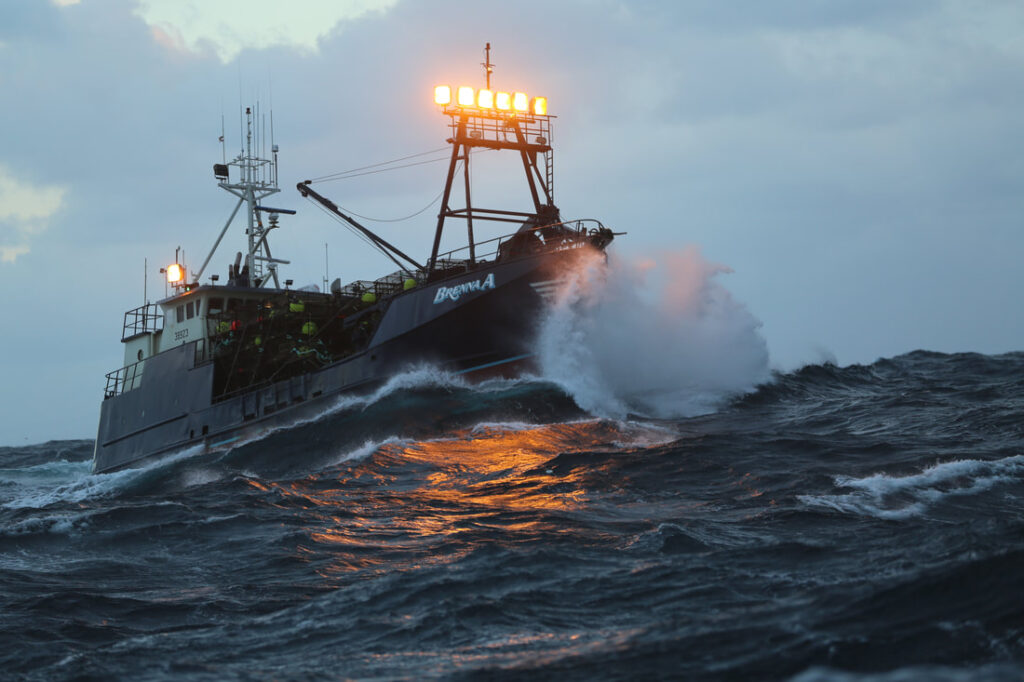
In the beginning, the physical changes to Pat’s body caused difficulties on how he conducted business. However, ALS didn’t change his business plan; it only sped things up.
In the beginning, while the body failed, the brain did not. With the purchase of the second boat, the F/V Brenna A, a safety and security net was raised a tad bit. We all had to work a little harder, reach a little higher, and come together to support Pat as we entered this next phase of his life and that of our family, running a business and a life with ALS.
As I mentioned in Part 2, those lessons learned from our early fish tendering days truly did help us when we encountered the biggest storm ever…ALS. It was all hands on deck as learned to just figure things out.
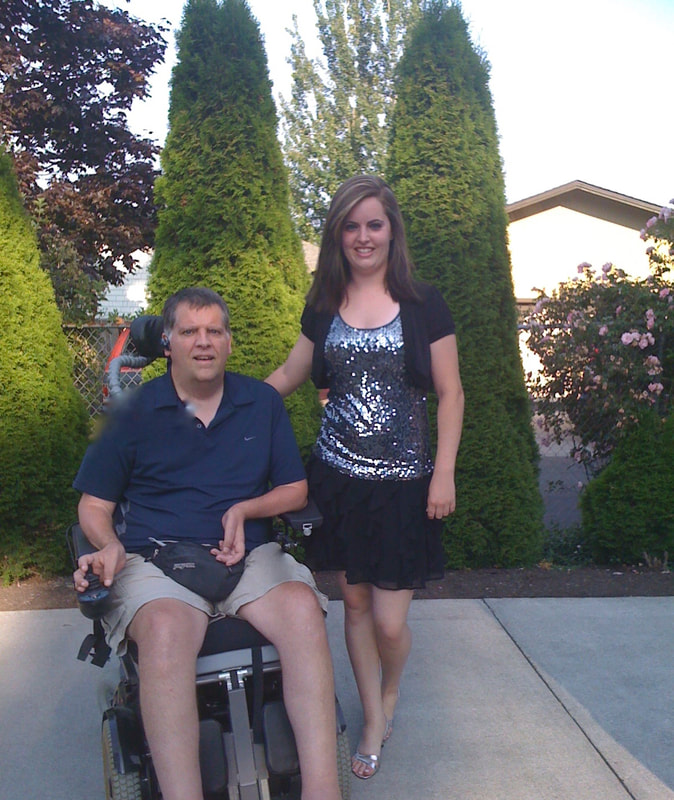
I’m so sorry for your loss. How did you deal with that grief?
It’s hard to put words to this question because there is no real way, with words, to explain how I dealt with the death and the grief of losing my husband, the kids losing their father from a disease that shouldn’t even be allowed on this earth.
It’s because there aren’t words strong enough or powerful enough to explain how badly your heart hurts some days.
There isn’t any way to explain the ricochet of angry words that bounce around in your head in a never-ending loop.
There isn’t any way to describe how some days, every body movement or gesture you make, feel like you are pushing your way through wet, heavy cement. And, if you stop moving, you might get stuck and never move again.
There isn’t any way to explain that waking up in the morning was not fun and that the fetal position with crying eyes became your constant companion.
There isn’t any way with words to console the pain and tears you see in the eyes of your children, or words to say as you watch them wipe those tears away.
There isn’t any way to fathom how the world can go on with the loss of this bright, vivid Pat light that shined so bright. It’s still stunning to think that the world still spins on its axis, as though all is right when it’s not.
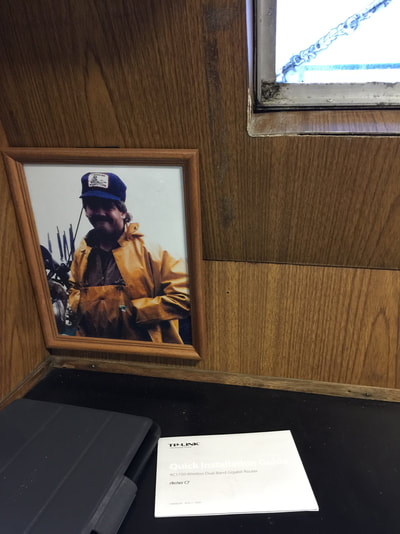
Grief with ALS is twofold. Before you grieve the loss of your person with ALS, you struggle with another kind of grief.
With ALS, there is a loss all of the time. You wake up in the morning, and you realize, “Ugh, dang it, I can’t move my arm as much as I could last week.”
Over Pat’s years of living with ALS, we grieved almost every day for the loss of the pieces of his life. Pieces that were consumed by his ALS; his walking, his talking, his breathing, his ability to eat. Every day, we faced those losses straight up in our face. Those losses were tough to watch. The grief that was produced was more of silent, subtle grief. You acknowledged it, but you didn’t dwell on it, you just tried to make it through the day.
Pat was a tough guy. To see him go from a burly, independent, life-loving soul to a man who became completely paralyzed and completely dependent in a slow unexpected ‘not in our life plans kind of way” was heartbreaking. It was cruel, and Pat was so not. It wasn’t fair.
In the beginning, the way I seemed to deal with my grief of losing Pat was just to keep moving. By moving, I mean, I traveled a ton. I went to stay with my sisters, I went to visit my cousins, I went to stay with my Mom, I spent time on the boat again. I road-tripped to see Brenna. I jumped feet first into ALS Advocacy. I was asked to serve on the board of directors for the ALS Therapy Development Institute. I did many fundraisers to raise money to help find a treatment or 20 for ALS. I ran our business.
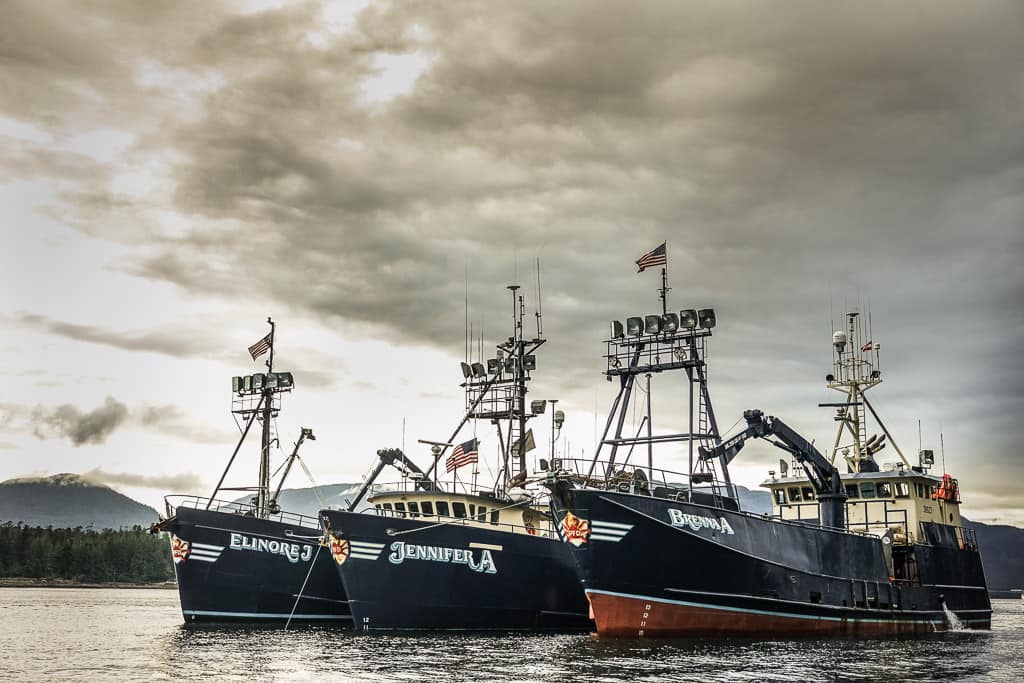
Despite all the moving, or perhaps we should call it “running,” the grief monster still came to visit. When it came, I decided to give two days to feel sorry for myself and allow myself to be sad and mad and missing Pat. But after two days, that was it. I could feel that wet, heavy concrete wanting to stop me in my tracks. I had to shake it off and get moving. Otherwise, I knew I would get stuck in place and not be able to move through life.
There was another way I handled that grief wave. I rode it alongside prayer and God.
I have a group of friends, a large, loud, loving family who supports me, and many people who keep our family in their prayers. When I’m stuck, I lean into those prayers, and they lift me. They keep me standing when all I want to do is fall down.
God has always been a part of my life. He has always been present in my soul. I was born and raised Catholic and went to Catholic grade school, so my Catholic guilt flag flies high!
But as Pat’s disease progressed and some days were very, very hard, and all the prayers in the world couldn’t lift us from the weight of ALS.
ALS days were sometimes messy and loud. In those messy and loud moments when I needed someone right now to yell at or swear at, I chose God. He was the only one who knew exactly what was going in my heart and my mind. I figured He was tough enough to handle my swearing and yelling. It was in those moments I turned the weight of ALS caregiving over to Him. I knew he could carry my load, and for a few minutes, I could relax. I could then gather my strength, take a deep breath, and continue to care for Pat…in a not so messy and loud way.
Now, as it’s been seven years since Pat passed away, I still use the support of prayers, and I still turn things over to God so He can lighten my load. I hope He’s happy I’m not swearing so much at Him now.
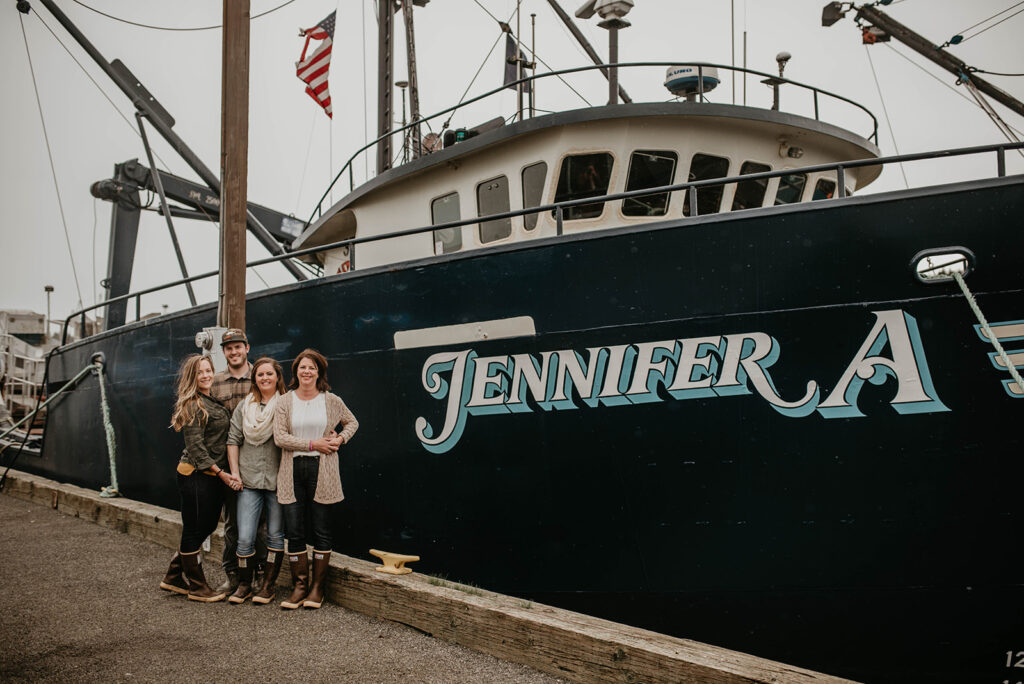
One thing I always try to remember is that Pat loved life. He loved everything about it. If Pat could wheel and negotiate a screaming deal, that was golden for him. His blue eyes would twinkle, and he couldn’t wait to call up one of his buddies and tell him about the deal he had made!
Pat was a good guy with a great sense of humor and a big heart. It’s still stunning to me that he is not here. But I know he would want me to live life as he loved it. That guides me, and that is my grief guide now. It guides me as I navigate new pages and chapters in my daily log book
A friend of mine always reminds me that life is good.
And, it is.🐟
Jennifer Gore Dwyer is the President of St. George Marine, a Board Member of ALS Therapy Development Institute, and the author of Crabby Mama. (Photo by Caitlyn Nikula)
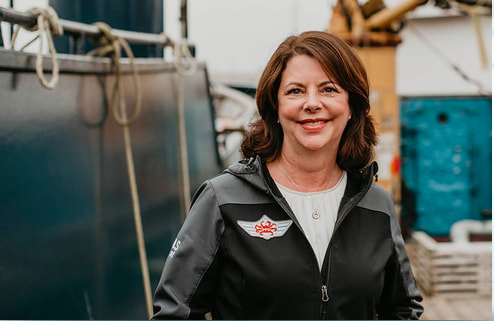
What do you think of Jenny’s stories? Does her lifestyle ring true to you? Let us know in the comments below!
Catch up on the series and more!:
PART 1: MEET JENNY GORE DWYER OF DEADLIEST CATCH
PART 2: MEET JENNY GORE DWYER OF DEADLIEST CATCH
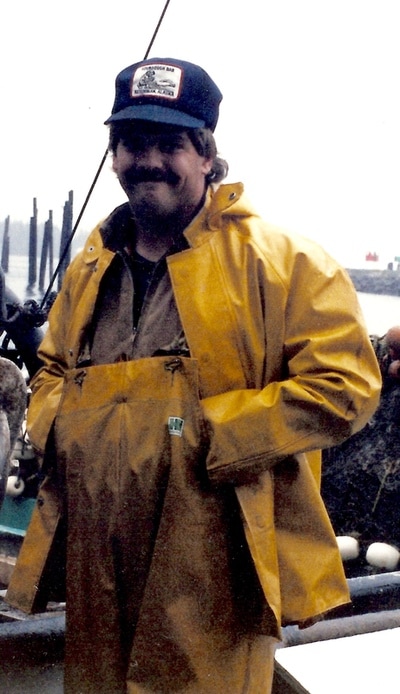

I was diagnosed last July. I was wheelchair bound. My feet hurt horribly on the foot petals. I started ALS/MND programme about 4 months ago. I’m now able to walk down the street and back at least I couldn’t do that prior to the ALS treatment. It doesn’t make the ALS go away but it did give him better quality of life. we got the treatment from vinehealthcentre. com
Thanks
Thank you for sharing, Meyer. I’m so glad you were able to find better quality of life. I’m interviewing Jenny Gore Dwyer for the Partners of Commercial Fishermen podcast tomorrow and will ask her about this. Her interview is set to go live by 7/31/2024. The Partners of Commercial Fishermen podcast is available on Apple, Spotify, and more. Thanks again for your time and reading the post. I wish you the best!
ALS is a cruel disease. My mother who had been diagnosed with Lou Gehrig’s disease for 3 years at the age of 82 had all her symptoms reversed with Ayurveda medicine from natural herbs centre after undergoing their ALS/MND Ayurvedic protocol, she’s now able to comprehend what is seen and she no longer needs the feeding tube to feed,. God Bless all ALS disease Caregivers. Stay Strong, take small moments throughout the day to thank yourself, to love your self, and pray to whatever faith, star, spiritual force you believe in and ask for strength, their website is naturalherbscentre.com She’s getting active again since starting this treatment program…
Hi, Katherine. Thank you for sharing. I’m sure others will appreciate knowing options for treatment, if they so choose. I send you and your mom the best. Thank you for being an example of what it means to care for family. You are in our hearts and prayers.